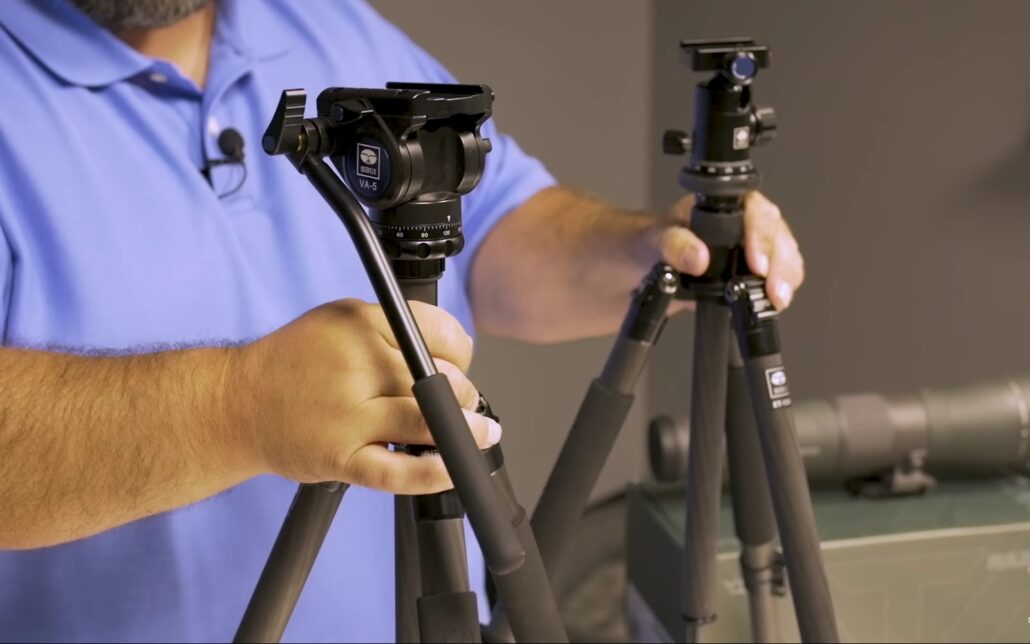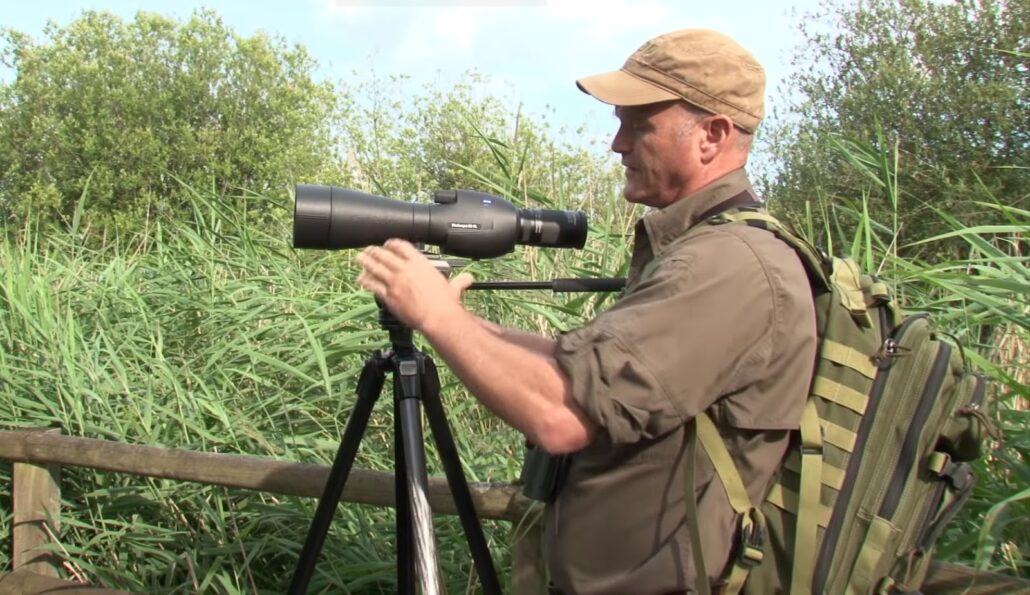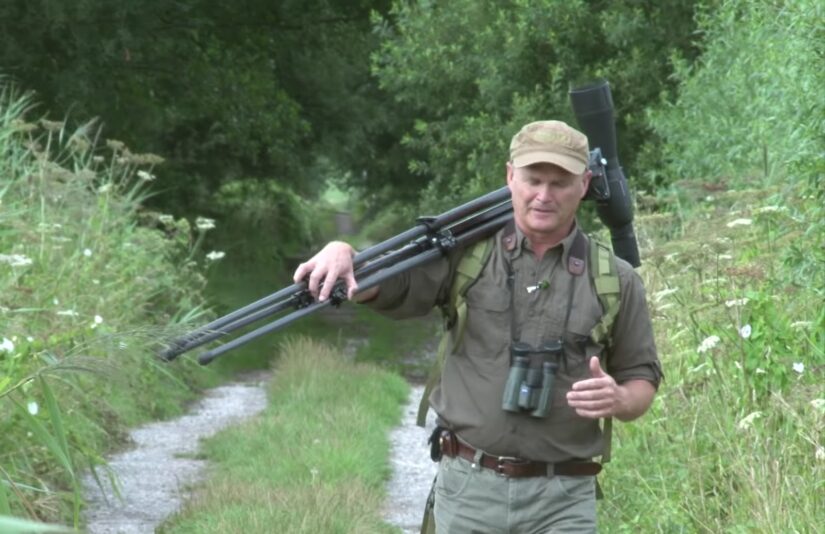Choosing the right spotting scope tripod for mountain hiking can significantly improve your viewing experience. This guide explores the key features to consider when selecting a tripod that combines stability, durability, and portability—crucial factors for the rugged terrains of mountainous areas. Whether you are observing wildlife or capturing scenic vistas, the right tripod can make all the difference in achieving clear, steady images from great distances.
Assessing Tripod Needs for Mountain Hiking
When selecting a tripod for mountain hiking, it is crucial to balance stability with portability. Mountainous landscapes typically present a variety of challenging conditions, including uneven ground and frequent gusts of wind. Therefore, it’s essential that the tripod is strong enough to withstand these elements while still being lightweight enough for easy transport. Consider the following aspects:
- Stability: Ensure the tripod can remain steady on uneven surfaces and resist shaking in windy conditions;
- Weight: Opt for a model that won’t add excessive burden during long treks;
- Compact Design: Choose a tripod that collapses to a manageable size for ease of packing and mobility.
These considerations will guide you in finding a tripod that supports your needs without hindering your hiking experience.
Exploring Tripod Materials and Construction Quality
The construction material of a tripod plays a pivotal role in its overall performance, especially in terms of durability and weight. Spotting scope tripods typically come in two primary materials: aluminum and carbon fiber.
Aluminum Tripods:
- Pros:
- Cost-effective: Generally less expensive than other materials;
- High Stability: Heavier weight contributes to better stability in windy conditions.
- Cons:
- Weight: Heavier than carbon fiber, which may be a drawback for long hikes.
Carbon Fiber Tripods:
- Pros:
- Lightweight: Easier to carry, reducing fatigue on longer journeys;
- Vibration Absorption: Superior in minimizing camera shake, crucial for high-quality photography in windy environments.
- Cons:
- Cost: More expensive, which might be a consideration for budget-conscious hikers.
When choosing between aluminum and carbon fiber, weigh the importance of cost against the benefits of a lighter, more vibration-resistant tripod. Each material offers distinct advantages depending on your specific needs and the nature of your hiking adventures.
Height and Compactness in Tripods for Mountain Hiking
When venturing into the mountainous landscapes, you must be equipped with a tripod that adapts to the changing terrains and offers versatile viewing experiences. A well-suited tripod for mountain hiking should possess legs that are adjustable in height to cater to various needs. The ideal tripod reaches a sufficient height to facilitate easy observation without the need to bend uncomfortably, guaranteeing an easy experience. When not in use, the tripod should be collapsible to a compact size for easy transportation. It must fit snugly into or be easily attached to a hiking pack without adding cumbersome weight.
For capturing unique angles, such as close-up macro shots or expansive landscapes, selecting a tripod with innovative features like a reversible center column or the capability to spread its legs widely is advantageous. This flexibility allows the position spotting scope close to the ground, perfect for capturing detailed textures or sweeping views at a low angle. Here are some key considerations for choosing the right tripod for mountain hiking:
- Height Adjustability: Look for a tripod that can be extended to various heights while remaining stable on uneven surfaces;
- Compact Design: Ensure the tripod can be folded into a compact size for hassle-free portability;
- Leg Versatility: Opt for tripods with legs that can independently lock at different angles to handle rocky or sloped terrains effectively;
- Material Strength: Choose lightweight yet durable materials such as carbon fiber to withstand the rigors of outdoor use without weighing down your pack.
Types of Tripod Heads for Improved Spotting Scope Usage
The choice of a tripod head is pivotal in maximizing the functionality and ease of use of a spotting scope, especially in outdoor environments like mountain terrains or wildlife areas. The tripod head should facilitate smooth transitions and adjustments to capture fleeting moments in nature. Two primary types of tripod heads cater to different needs:

Pan-Tilt Heads: These heads are characterized by their separate controls for horizontal and vertical panning, making them ideal for precise adjustments. They are particularly beneficial for wildlife watchers and photographers who need to track moving objects smoothly and accurately. The ability to adjust each axis independently helps in maintaining stability and focus.
Ball Heads: Known for their versatility and ease of operation, ball heads allow for quick and smooth adjustments in multiple directions. This type of head is suitable for explorers who need to change viewing angles to scan a broad landscape or swiftly follow moving objects. The simplicity of movement and the ability to lock in any position make ball heads a favorite among those who value speed and flexibility.
When selecting a tripod head, consider the following aspects:
- Control Mechanism: Evaluate whether separate controls (as in pan-tilt heads) or a single locking mechanism (as in ball heads) will better suit your observation or photography style;
- Load Capacity: Ensure the head can support the weight of your spotting scope or camera, especially when fully extended;
- Ease of Adjustment: Choose a head that offers fluid movement and robust locking capabilities to maintain the desired position without drift;
- Compatibility: Check that the tripod head fits with your tripod legs and your camera or scope for a secure and reliable setup.
Weight Capacity of Tripods
When selecting a tripod, a critical consideration is its weight capacity. This figure represents the maximum weight the tripod can safely hold without risk of tipping or failing. It is essential to choose a tripod that can handle not only the weight of your spotting scope but also any extra gear you may attach, such as cameras or smartphones. Selecting a tripod with an inadequate weight capacity can lead to instability, especially hazardous in rough terrains like mountainous areas, potentially causing equipment damage or personal injury. Here are some aspects to consider:
- Maximum Load: Always verify the maximum load capacity specified by the manufacturer;
- Material Strength: Tripods made from strong materials like carbon fiber or aluminum offer better support and durability;
- Counterweight Options: Some tripods feature hooks for adding a counterweight for extra stability, which is particularly useful for heavier setups.
Tripod Stability and Footing
The stability of a tripod is essential, especially when used in challenging outdoor environments such as mountains. The design of the tripod’s feet plays a significant role in how well it can maintain stability across various surfaces. When choosing a tripod for mountain hiking or any rugged outdoor activity, consider these features:
- Interchangeable Feet: Opt for tripods that offer interchangeable feet options. This feature allows you to switch between different types of feet depending on the terrain—rubber or plastic caps are ideal for hard surfaces, while spiked feet provide better grip on softer grounds;
- Broad Footprint: A wider footprint can enhance stability, making the tripod more resistant to winds and uneven surfaces;
- Leg Locks: Ensure the tripod has reliable leg locks. These are crucial for maintaining the stability of the setup as they prevent the legs from collapsing under the weight.
Tips for Tripod Use in Various Terrains
- Rocky Surfaces: Use rubber caps to prevent slipping and to protect the tripod legs from abrasions;
- Muddy or Grassy Areas: Spiked feet will dig into the ground for a firmer hold;
- Mixed Terrain: Always test the stability of the tripod before attaching expensive equipment.
Upgraded Features for Superior Tripod Functionality
When selecting a tripod for outdoor activities such as bird watching or scenic photography, considering the additional features offered is crucial. These enhancements not only contribute to the usability of the tripod but also to the overall experience:

- Integrated Spirit Levels: Certain tripods are equipped with integrated spirit levels, a feature that ensures your equipment is set up on an even plane, crucial for precise imaging and observation;
- Weight Hooks: To combat instability in breezy conditions, some tripods include hooks located beneath the center column. These allow users to attach weights, anchoring the tripod more firmly to the ground, thus reducing shake and improving the quality of the visuals captured;
- Adjustable Legs and Feet: Tripods with versatile leg adjustments and adaptable feet provide stability on various terrains, from rocky pathways to muddy banks. This adaptability is essential for outdoor enthusiasts who traverse diverse environments;
- Quick Release Plates: For those needing swift setup and breakdown, quick release plates facilitate easy attachment and removal of your spotting scope or camera, saving valuable time during fleeting natural occurrences.
Incorporating these features improves the tripod’s functionality, making it an indispensable tool for any nature observer or photographer aiming for perfection in their craft.
Budget Considerations for Tripod Investments
Investing in a tripod involves careful financial consideration, akin to selecting any other vital outdoor gear. Here are several points to help guide your purchase:
- Quality Over Price: Opting for the least expensive option might seem appealing, but investing in a higher-quality tripod pays off in the long run. Premium tripods offer greater durability and stability, crucial for capturing clear images and enduring rigorous outdoor conditions;
- Long-Term Investment: Consider a tripod as an integral part of your outdoor kit, much like a sturdy pair of hiking boots or a durable backpack. It’s an investment that should endure multiple adventures, providing reliability and performance year after year;
- Price vs. Performance: Evaluate the balance between cost and the features offered. It’s often worth spending a bit more on a tripod that provides critical features such as enhanced stability, ease of use, and compatibility with various devices;
- Look for Deals: Keep an eye out for sales and discounts on high-quality models. Many outdoor equipment retailers offer seasonal promotions and discounts that make investing in a good tripod more affordable.
For a comprehensive overview of specific models ideal for mountain hiking, be sure to check out this spotting scope tripods list. This list features a carefully selected range of tripods that excel in stability, durability, and portability, ensuring they meet the needs of the most demanding outdoor enthusiasts. Each tripod has been rigorously tested for performance and user satisfaction in rugged terrains.
Conclusion
Selecting an ideal tripod for your spotting scope is essential for successful mountain hiking excursions. By prioritizing a balance of stability, lightweight design, and ease of use, you can ensure optimal functionality and enhanced viewing experiences in diverse outdoor conditions. Remember, the best tripod is one that meets your specific needs while withstanding the challenges of mountain terrain.
